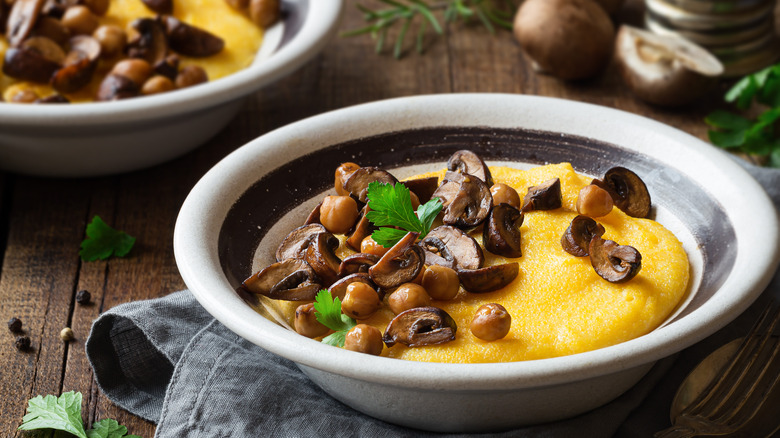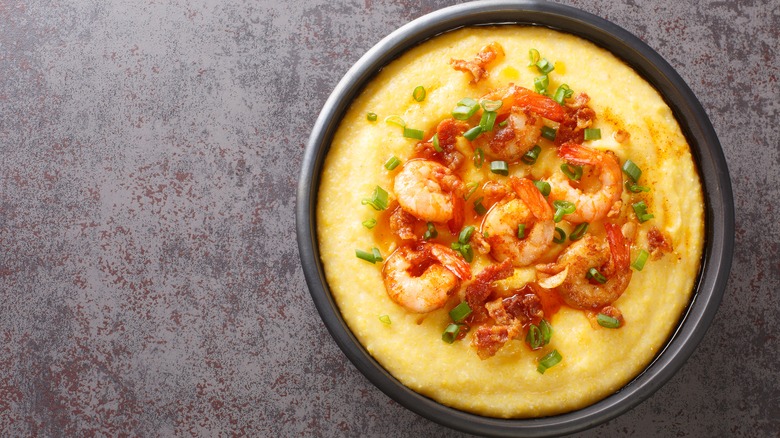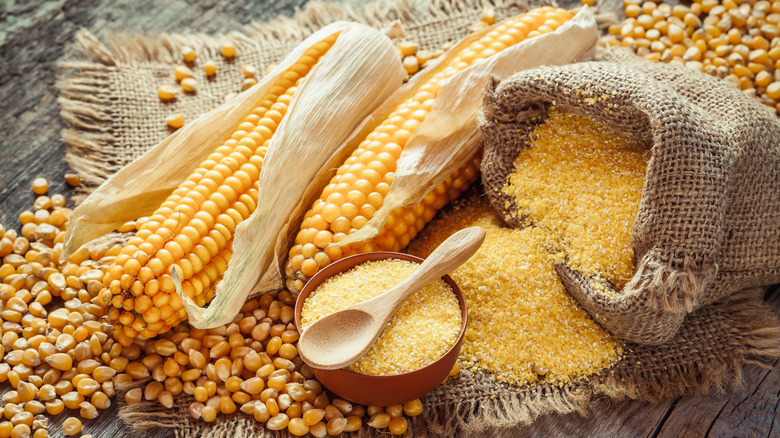Is There A Difference Between Grits And Polenta?
We may receive a commission on purchases made from links.
Corn is an American institution — continental American, at least. According to MayaIncaAztec, corn was an important crop for the people of the Mayan, Aztec, and Incan empires, and some estimates say that 80% of the Mayan diet was made up of corn. By about 200 A.D., the crop would migrate to the southern coast of North America.
Since these ancient roots, corn has taken on a wide variety of different forms in the Americas. This includes the ubiquitous corn tortillas, and the sweet corn of summer. Today, this grain plays a different role as the United States' most widely produced agricultural product that is used to fuel livestock production (via Ag America Lending).
Two of the most popular uses for corn today come in the form of grits and polenta. Allrecipes says that both of these classic dishes are made with cornmeal, but both of these delicious options have a few defining characteristics that are worth getting to know.
History of both dishes
While each of these dishes are made up of cornmeal, they have very different origins. According to NPR, an early form of grits was likely common in Central America as far back as 8700 B.C. Because grits are made up of milled corn that has been mixed with water and then heated, it was likely an early invention. A porridge of corn was also presented to the first British settlers in Virginia by Native Americans, and the dish was described by settlers as a "grist," which would later evolve into "grits." Orlando Magazine claims that the dish easily took off due to the simple fact that corn thrived in the warm climates. As a result, the dish became a staple.
Polenta had a similar arc of growth in its home country of Italy. The dish became a popular staple due to necessity and abundance. La Cucina Italiana claims that the first forms of polenta date back to ancient Rome. A dish called puls was commonly made as a grain porridge using crops like barley. Corn was then introduced to the country from "the new world" in the 1500s. As the crop thrived in the north, it took the place of other grains, and polenta became a common dish.
Nonno Nanni says that it was very popular among farmers who would have some form of polenta at every meal of the day.
Differences between grits and polenta
If you've ever tried to buy the ingredients for either of these dishes, you may have run into some confusion at the grocery store. Allrecipes says that grits and polenta are both the names of dishes made with cornmeal, and so the boxes may carry the name of the dish, or simply say cornmeal. It's important to find the right cornmeal, though, because it can severely affect the flavor and texture of your chosen dish.
Masterclass says that the primary difference between these two is the kind of corn used. Polenta comes from cornmeal made with the Italian otto file variant of corn, which produces, a light, almost floral flavor. Bob's Red Mill says that grits are made using a hardy corn called dent corn that has been hulled into hominy. The hulling gives a sweeter, more corn-forward flavor, while also providing a white color, which is why polenta typically has a bright yellow shade, and grits are often a more subdued white.
Southern Living adds that both dishes also have different textures as polenta is typically a finely ground texture that makes a fluid porridge which then solidifies into a cake when cooled. Meanwhile, grits can come in a wide variety of different milling types, and as a result have a wider variety of available textures.
The differences between these two might be subtle, but it would certainly be a challenge to pass one off as the other.


